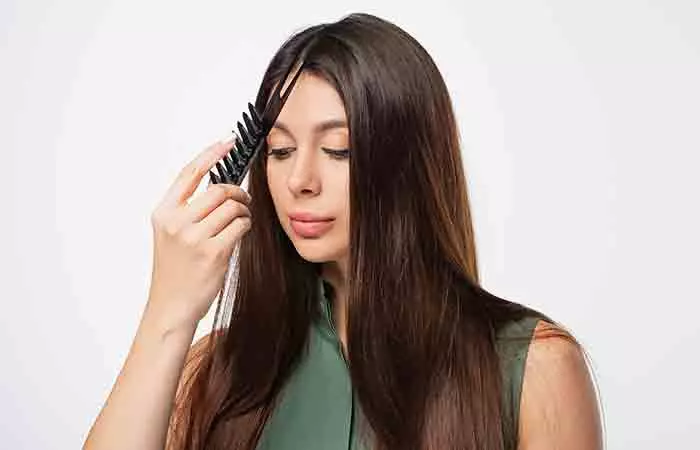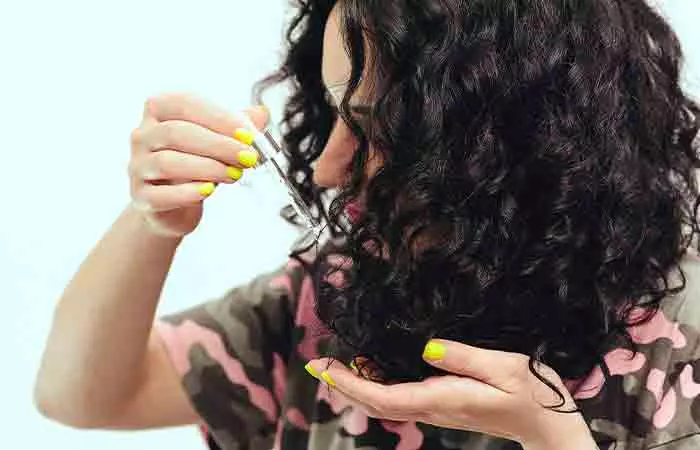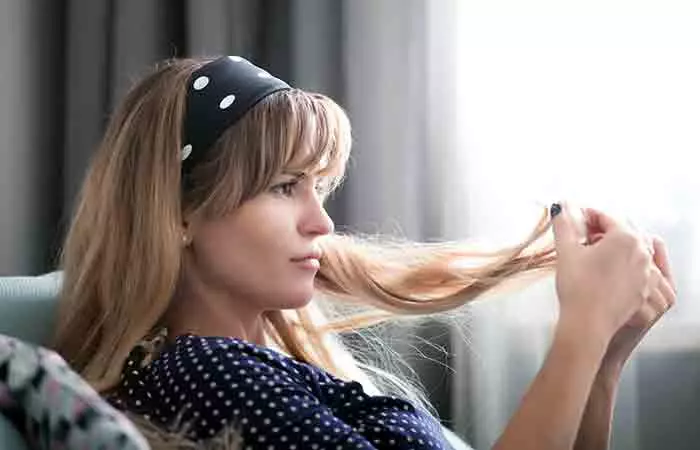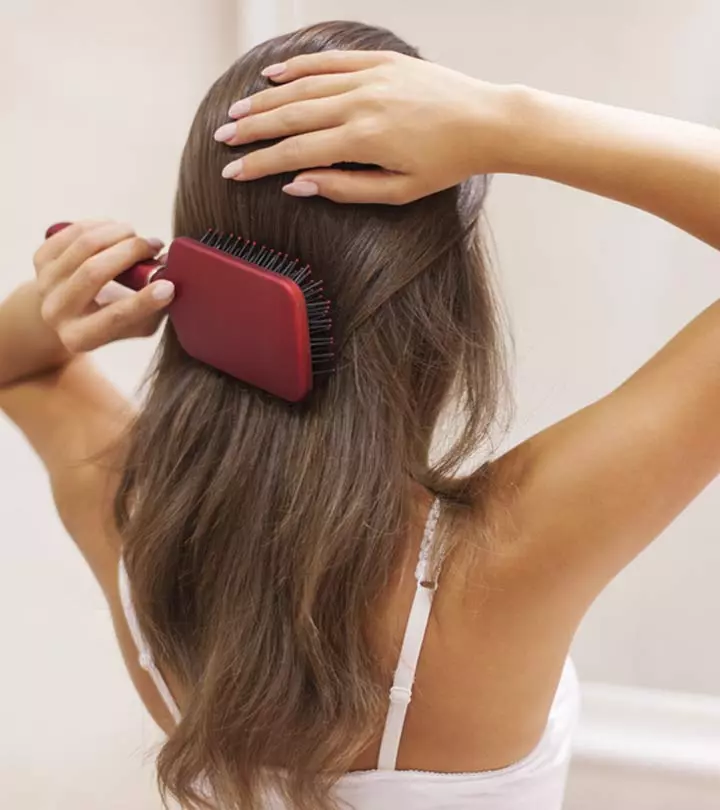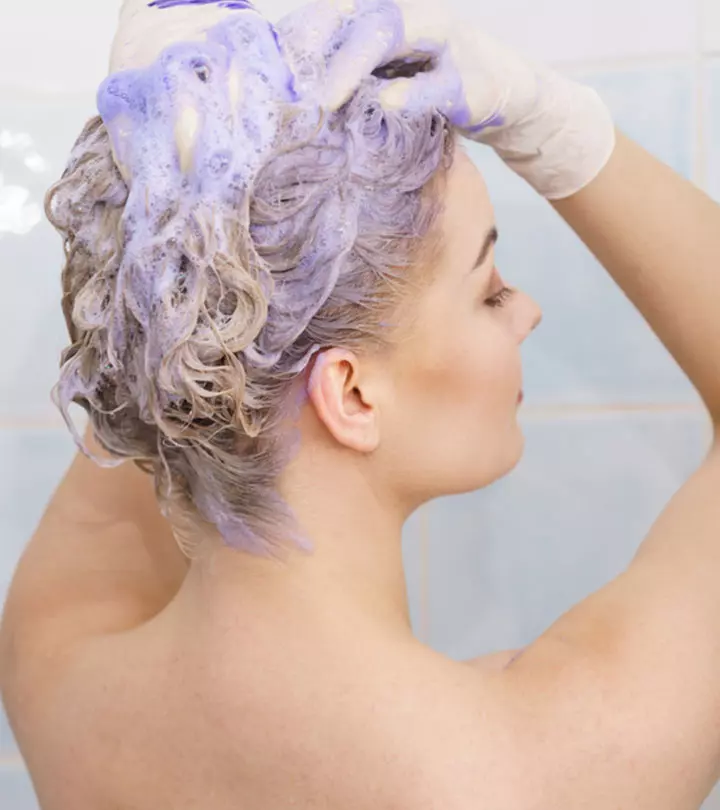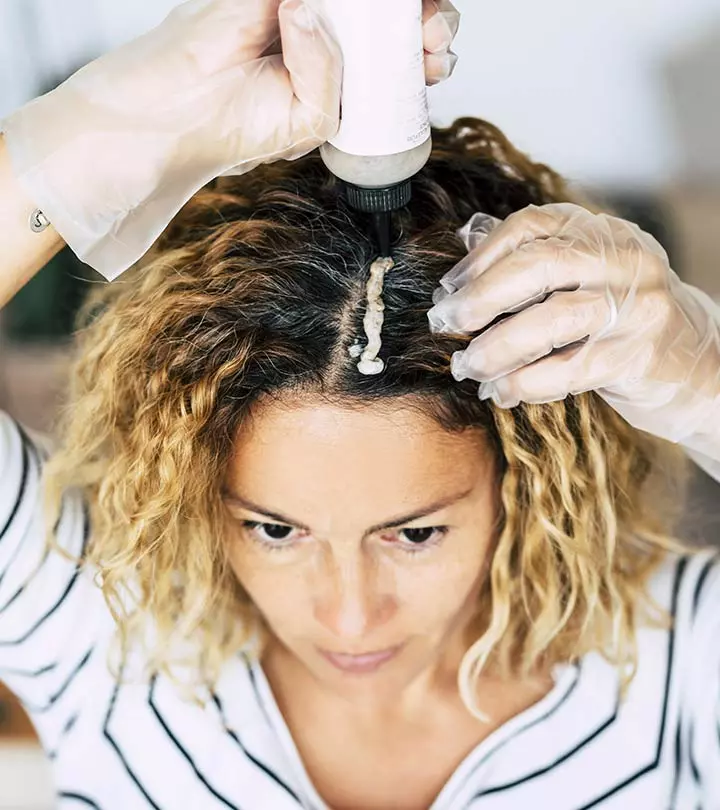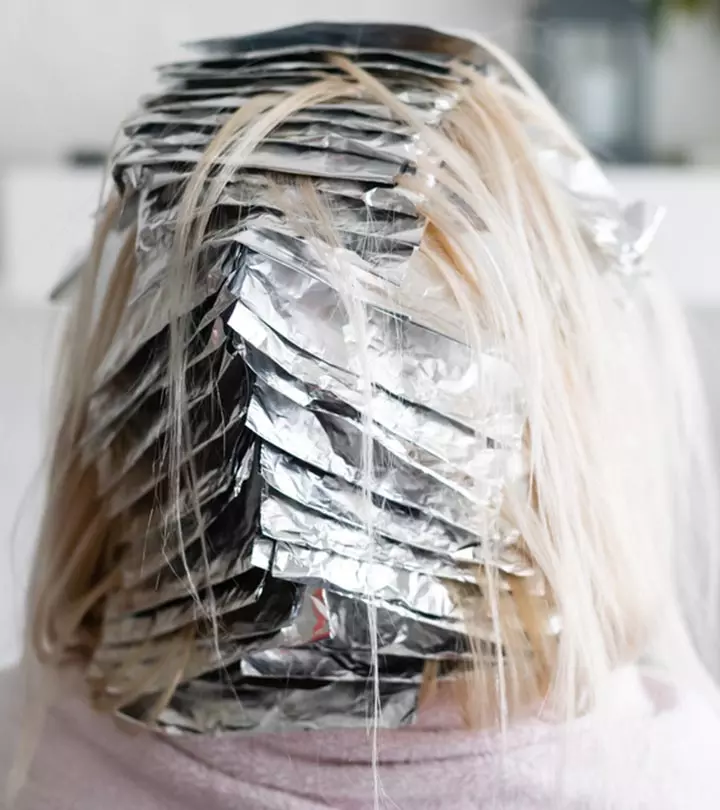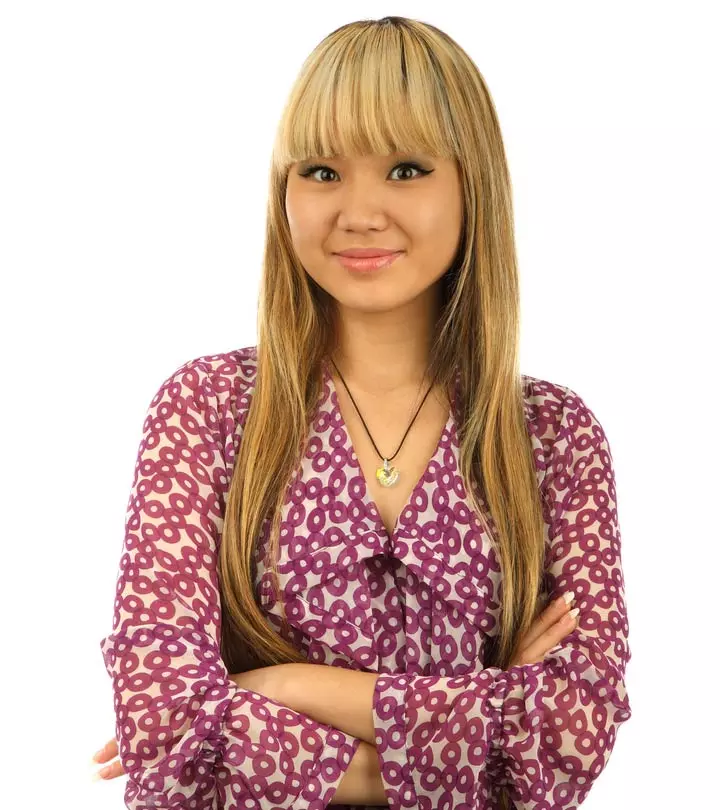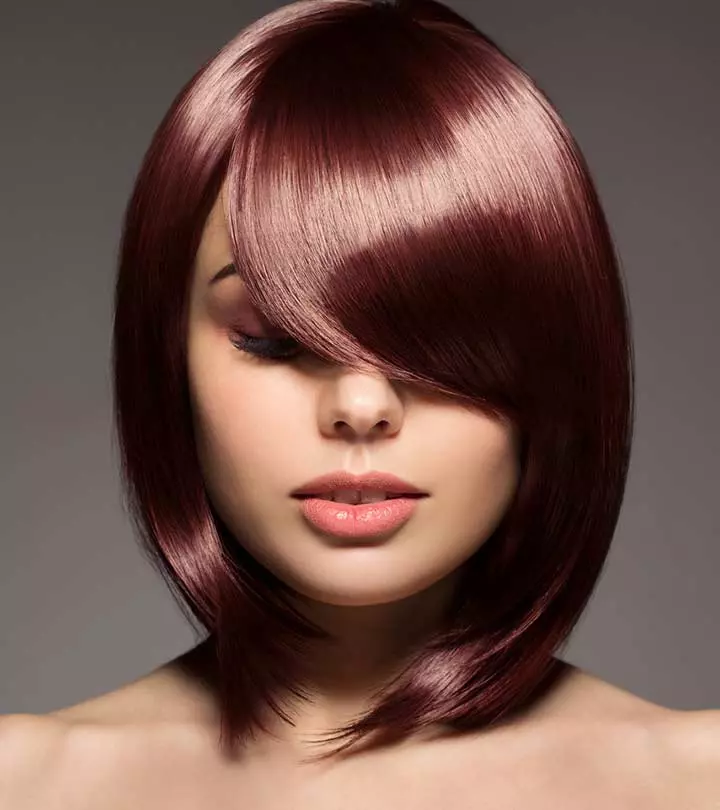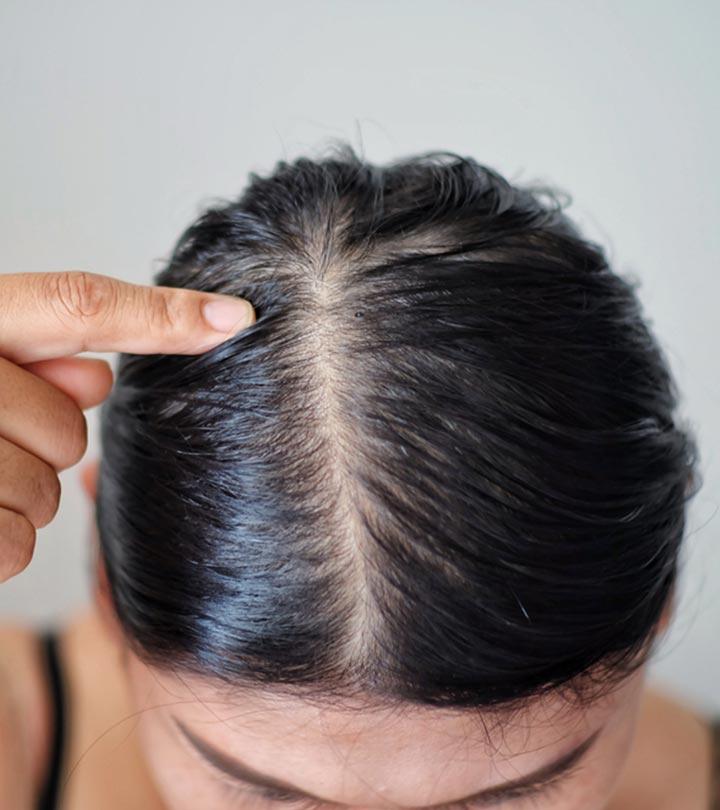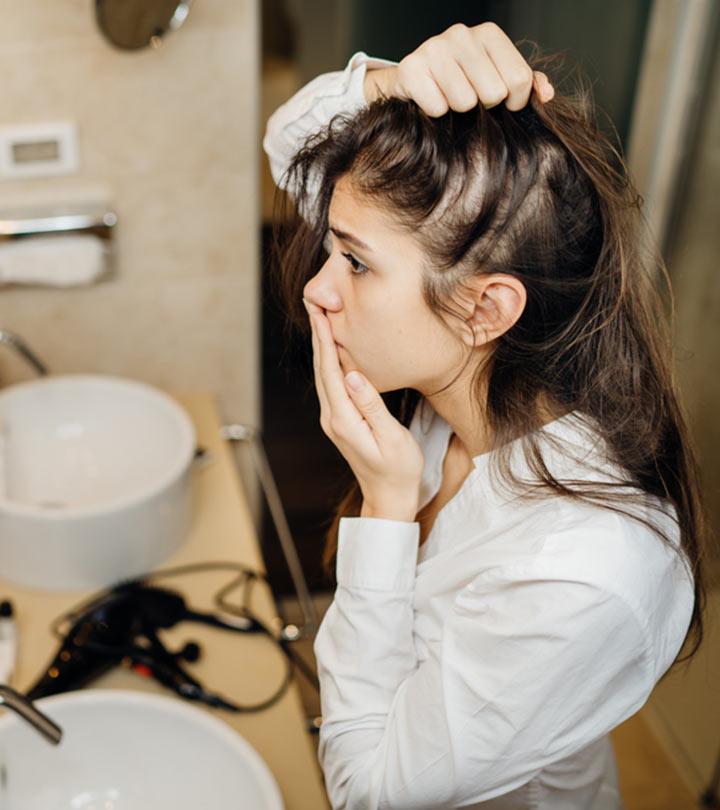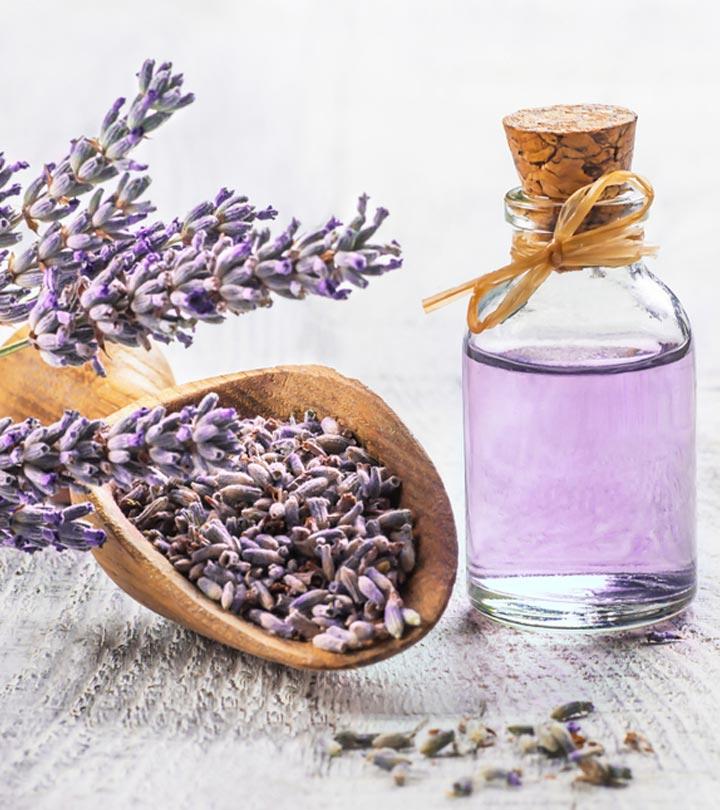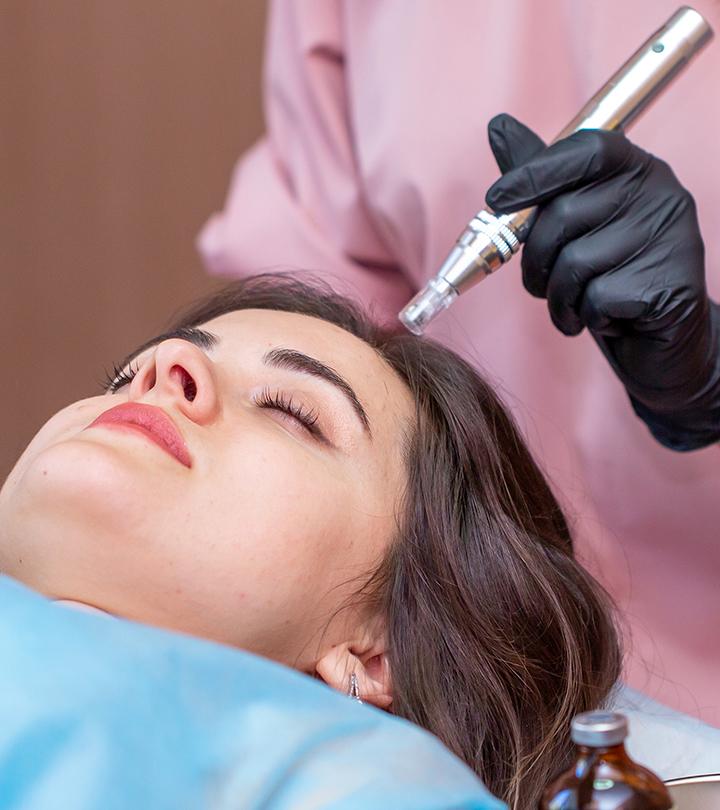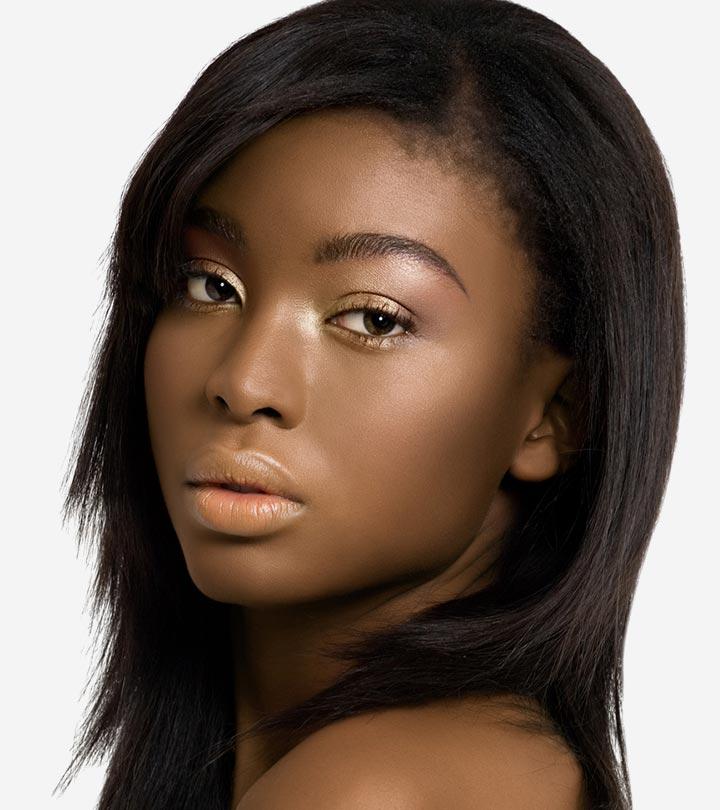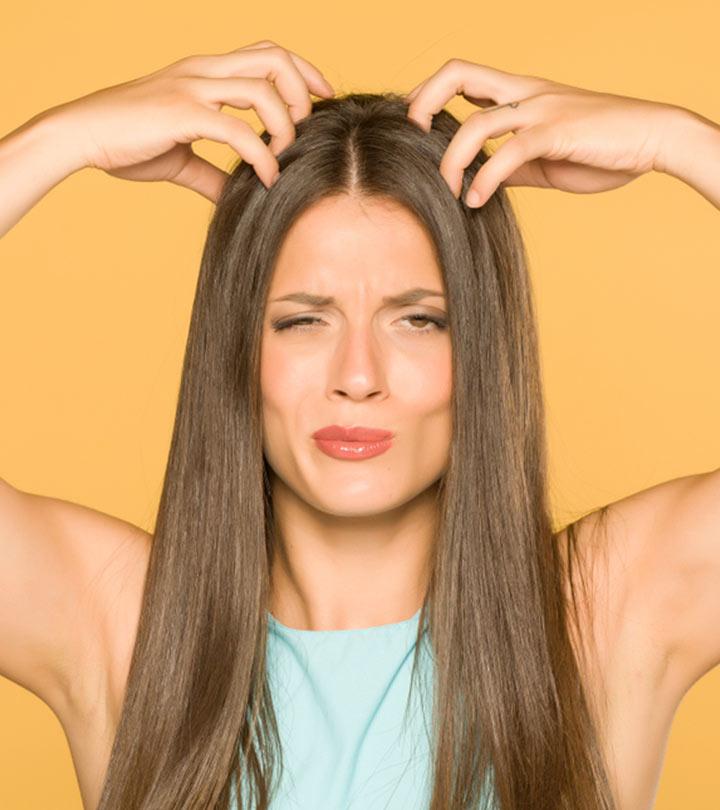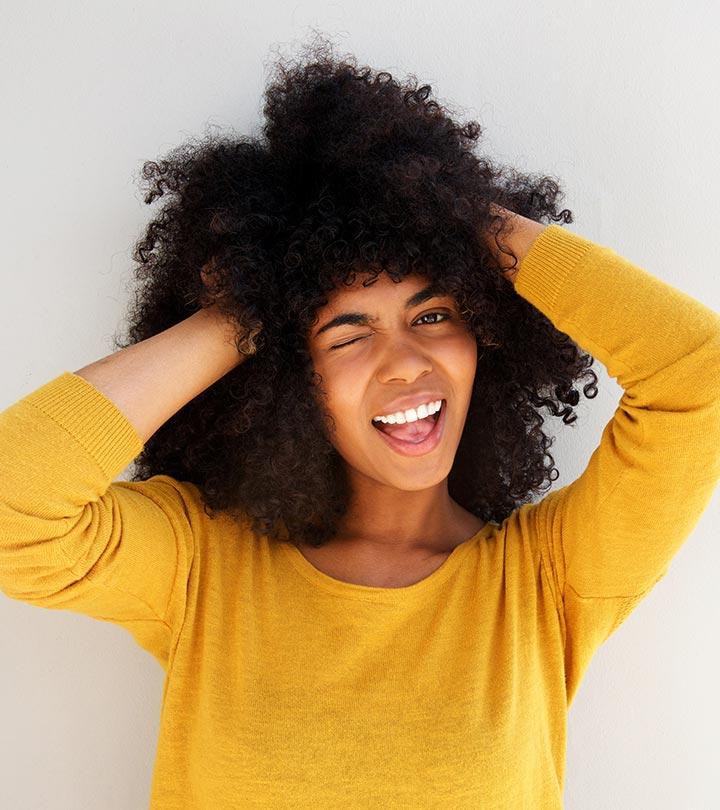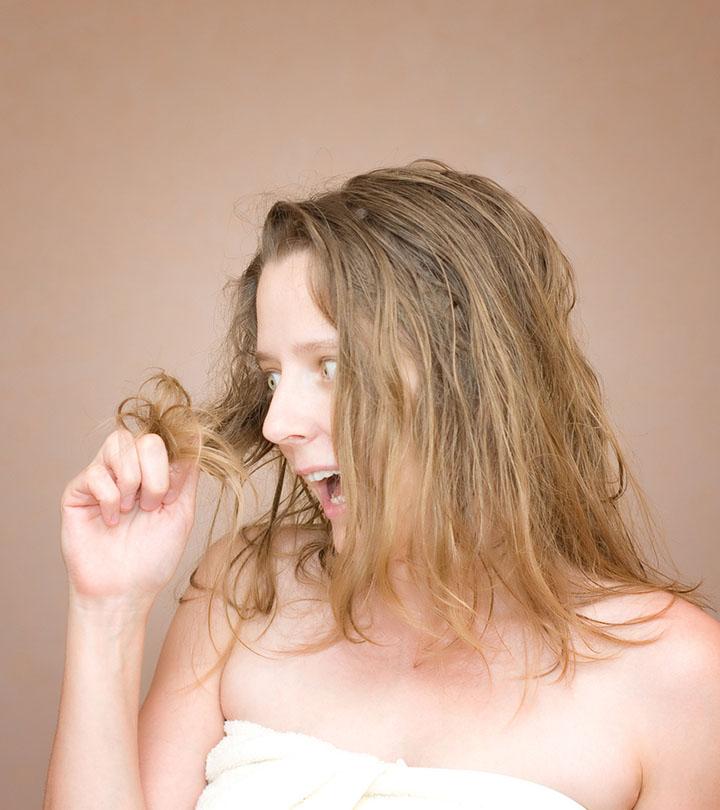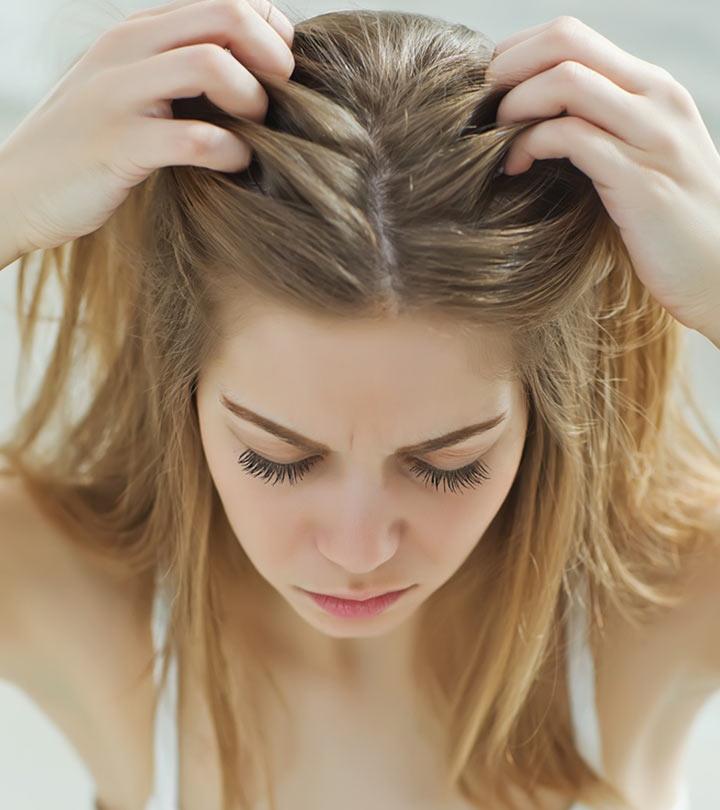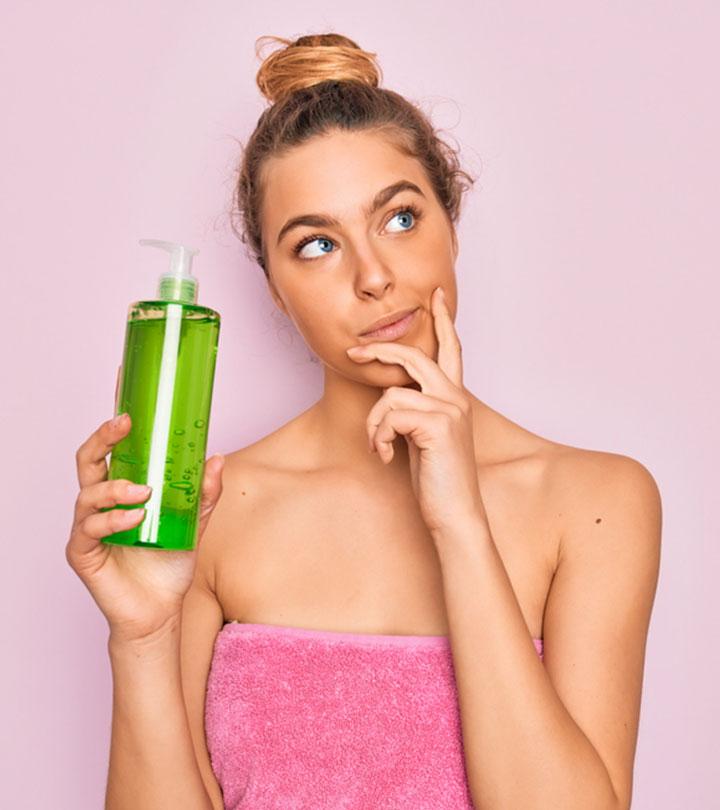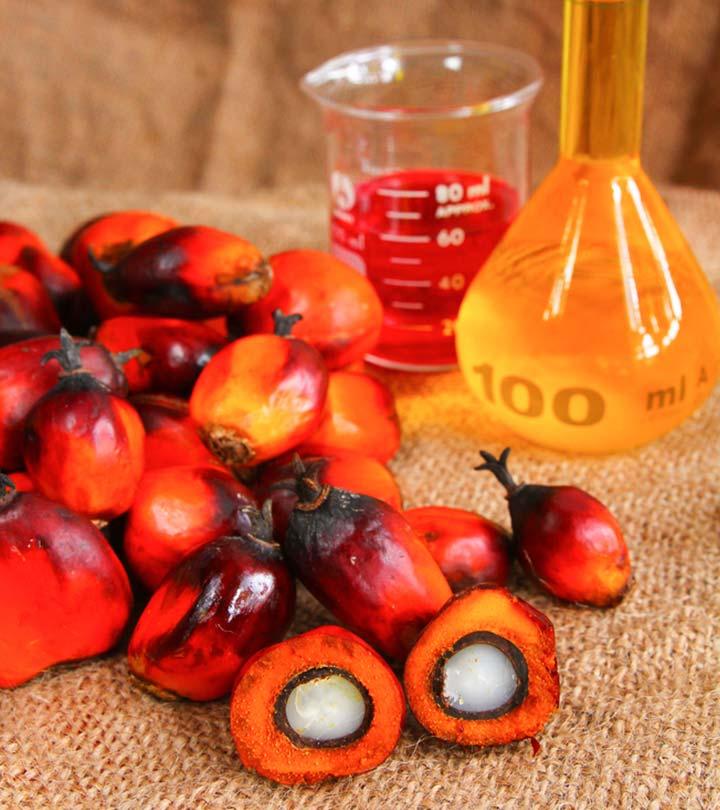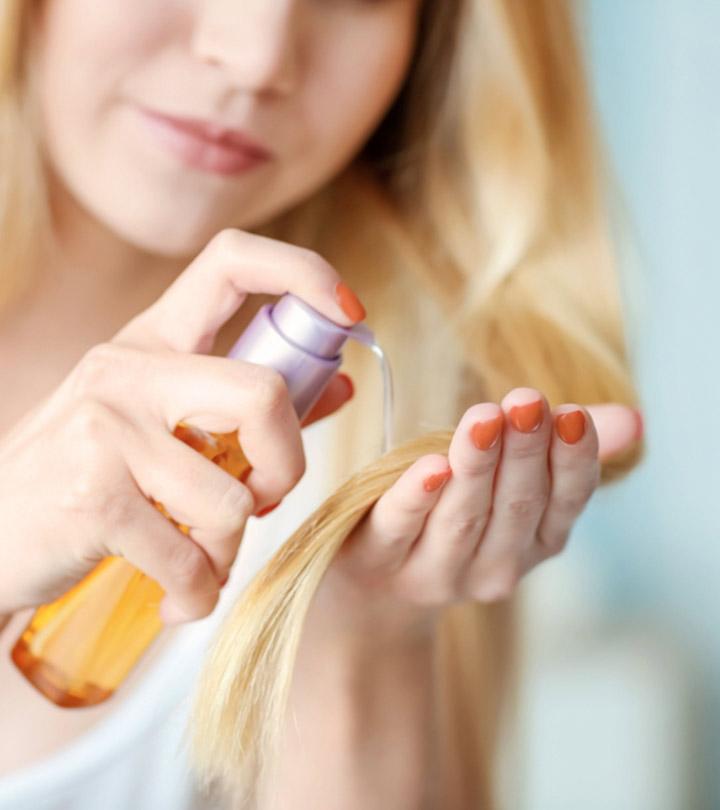Is Bleaching Your Hair Twice In A Day A Good Idea?
Now know what happens to your tresses when you bleach them twice in a row.
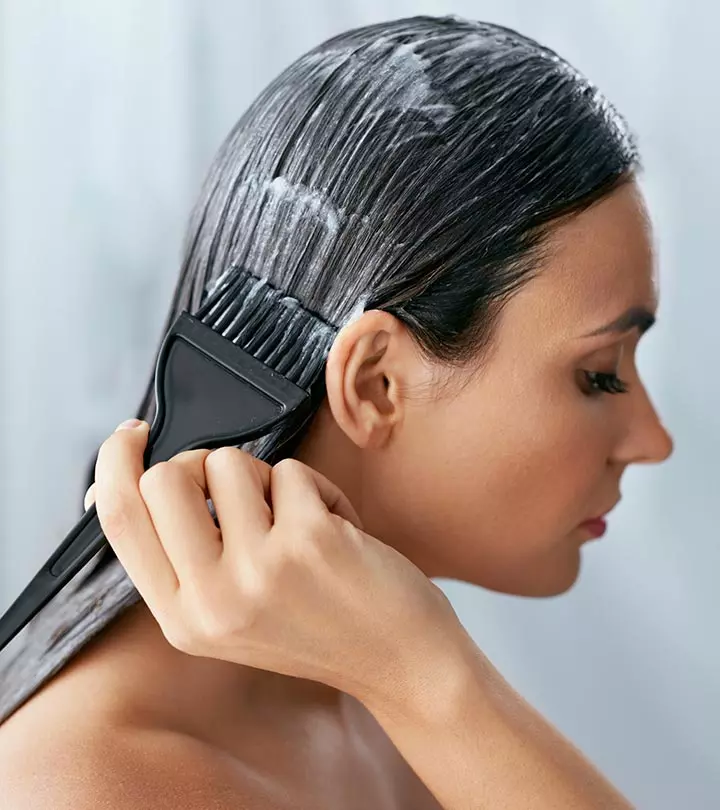
Image: Shutterstock
You can completely remodel your hair by bleaching it. It is the best way to get a new look. But, can you bleach your hair twice? Here, we have answered all your queries about bleaching, its effects on hair, and more. Bleaching leaves a trail of issues on your hair and may even aggravate the issues like dryness, frizziness, and breakage.
In this article, we discuss all you need to know about bleaching, double bleaching, and some related issues. Keep scrolling!
In This Article
How Exactly Does Bleaching Work?
Bleaching oxidizes melanin pigments in the hair and lightens its color. Bleach contains oxidizing agents like hydrogen peroxide and ammonia. These are chemically aggressive agents and can damage the hair shafts if you repeat the treatment (1).
While manufacturers claim their products are peroxide-free, it does not mean that they are free of harsh chemicals. It only means that the bleaching formula has some other bleaching agent, which will probably be just as harsh, if not worse.
But how bad is the bleaching process? Check out some side effects of bleaching your hair twice in the next section.
 Quick Tip
Quick TipWhat Are The Potential Harmful Effects Of Bleaching Your Hair?
Whether you get it done at a professional salon or DIY at home, hair bleaching has the following side effects:
- Scalp Burns: Bleaching can leave your scalp itchy and damaged (2). If you feel an itch or burn on the scalp while bleaching, rinse it off immediately.
- Dry, Frizzy, And Coarse Hair: Bleaching makes the hair dry, frizzy, and rough, robbing it of its natural beauty and shine. To counteract this and reverse the damage, you can apply coconut oil and go for conditioning treatments.
- Discolored Hair: This happens if you do not mix the bleaching ingredients in the right amounts.
Bleaching is an aggressive (and at the same time) delicate process for your hair. You can bleach your hair twice, but not twice in a row on the same day as it may cause hair breakage and hair fall. You may even lose hair in clumps, and each time you touch your hair.
So how long should you wait before bleaching your hair the second time around? Find out below!
How Long Should You Wait Before The Second Bleaching Session?
Try not to bleach your hair twice a week. Wait for about 4 to 6 weeks before bleaching it again.
This waiting period allows your hair to rest, rehydrate, and recover from the effects of the first bleaching session. Before the second bleaching session, continue to oil your tresses and undergo conditioning treatments. This will keep your hair in better shape.
Maria, a blogger, shared the story of bleaching her hair. She writes, “Bleaching did not ruin my hair after I had done it only once. Bleaching ruined my hair when I did it three times and also used hair dye 6 times on my whole hair, all in 2 and a half months (i).”
In the following sections, we have covered the basics of bleaching and how to prepare your hair for the next bleaching session.
How To Bleach Your Hair – A Beginners Guide
Apply extra virgin coconut oil to your hair two to three days before bleaching and let it absorb the oil overnight. Coconut oil penetrates the hair, keeps it moisturized, and can minimize the harsh effects of bleach (3).
Get The Materials Ready
The following day, keep all the materials ready in one place. These include:
- A non-metallic bowl and a brush
- A lightener and developer
- A toner
- Sulfate-free shampoo
- Deep conditioner
- Purple shampoo and conditioner
- A large comb
- A rat tail comb
- An old t-shirt
- Gloves
- A plastic cap
Bleaching Instructions: A Step-By-Step Guide
- Part your hair into smaller sections. Wear gloves and cover the shoulders with an old T-shirt to avoid any stains.
- Mix the lightener and developer according to the instructions on the bottle.
- Start applying the mixture from the back of the head and move towards the front. Apply it evenly and leave about 5 cm off the roots. Put on a shower cap.
- Leave it on for about 20 minutes. Then, apply the mixture to your roots, and let it sit for about 10 minutes. You may skip this part.
- Shampoo your hair and follow up with a hydrating conditioner. Use room temperature water for rinsing.
- Let your hair air dry. Now, apply an expert-approved toner to get the perfect tone and level of brightness.
- If the result is too brassy for your choice, apply a purple shampoo and conditioner.
In some cases, your hairdresser might recommend a specific shampoo and toner and hydrating, protein-rich treatments to maintain your hair health. Remember to follow a well-balanced diet to keep your hair strong, smooth, and shiny (4).
Wait for at least a week or two before you bleach your hair again.
Prepping Your Hair For The Second Bleaching Session
Pre-Bleaching Care
- Between both the bleaching sessions, strengthen and moisturize your hair so that it is ready to face the second round of bleaching.
- Apply extra virgin coconut oil from the middle of the hair and let it soak the oil. Do it once or twice a week.
- Avoid heat styling equipment, such as flat irons and blow dryers.
- If you notice split ends, trim them before the second session.
- Similar to the first session, apply coconut oil the previous night and prepare your hair by giving it that extra boost of hydration.
 Quick Tip
Quick TipBleaching Instructions: A Step-By-Step Guide
- Bleach your hair following the same steps mentioned in the first round of bleaching.
- In the second round, leave the mixture on for only 10 minutes and then wash off.
If you feel that your hair has suffered a lot of damage in the first bleaching session, wait for a month before bleaching it again. The same goes for toning. Toning is the process of eliminating brassy hues from bleached hair. A common question that runs through everyone’s mind is if they can tone their hair a day after bleaching it.
The answer is yes, you can! In fact, some hair colorists recommend getting your hair toned a day or week after the bleaching session to achieve a desired hair color. If your hair is extremely damaged or looks dry and brittle after a bleaching session, opting for a toner straight the bleaching process can cause more harm than good. Let your hair recover, use some deep conditioning treatments to repair hair damage, and when you notice an improvement in your hair quality, choose a good quality toner to get rid of the brassy notes from your bleached strands.
Since bleaching your hair twice can do some damage to your locks, you need to be as careful as possible. Keep the following bleaching tips and warnings in mind.
Tips And Warnings
- Be Mentally Prepared: If you wish to bleach your hair, be prepared for the fact that it will need higher-than-usual maintenance.
- Do Your Homework: Understand your hair type and invest in quality hair care products. Consult a hairstylist, do your research online, and take serious care of your tresses.
- Proceed One Step At A Time: You cannot get platinum or ash blonde hair in just one session. Avoid bleaching the hair too frequently. Maintain a gap of at least two weeks between sessions. With each session, you can lighten your hair up to three tones.
- Take Professional Help To Minimize Damage: If you think your hair has suffered damage after the first round of bleaching, seek professional help. Your hairstylist can do a strand test to see how long the bleach should stay the second time around. For best results, get the second round of bleaching done by a professional.
- Take Care Of Your Hair Post-Bleaching: Bleaching makes your hair brittle and fragile. Take the necessary after-care to prevent further damage.
- Consider The Ideal Waiting Period: If you can wait it out, go for another bleaching session only after four to six weeks, which is sufficient time for your hair to rest and breathe.
- Never Apply Unevenly: When applying the bleach, make sure to apply it evenly for the best results.
- Keep An Eye Out For The Time: Leaving the bleach on for too long or too short can result in undesirable results. Make sure to keep a timer on.
Infographic: Pro Tips On Double Bleaching For Hair
As a general personal advice, we suggest you avoid bleaching hair at all, let alone twice. It is a harmful process that will damage hair no matter how many precautions you take.
However, if you absolutely must do it, here’s a quick reference infographic with a list of things to keep in mind when double bleaching.

Illustration: StyleCraze Design Team
Bleaching causes a slew of problems in your hair, and it can exacerbate problems like roughness, frizz, and breakage. In addition, bleaching is a harsh (but sensitive) method of removing color from your hair. You can bleach your tresses twice, but not on the same day, as this might lead to hair breakage and thinning. If you have never bleached your hair before, seek professional assistance and take adequate care of your hair before and after the procedure. To reduce the damaging effects of bleaching, moisturize and condition your hair and use nourishing hair care products.
Frequently Asked Questions
Should I bleach my hair again if it turns orange?
Yes, you can bleach your hair after it has turned orange. It may have turned orange due to the quick removal of bleach or it probably didn’t lighten enough. Applying more bleach to it helps in the lightening process.
What happens if you over-bleach your hair?
Over-bleaching hair may trigger hair damage and hair loss and lead to scalp burns and irritation. Since the bleaching agent penetrates your strands, over-bleaching may cause your hair to ‘melt’.
How do you fix unevenly bleached hair?
It is highly recommended to get unevenly bleached hair fixed by a professional hair colorist or stylist. To fix uneven bleached hair, you have to wait at least 3 weeks and then re-bleach the hair.
Can I dye unevenly bleached hair?
Yes, you can dye your hair if it is unevenly bleached. However, maintaining a day’s gap is suggested as bleached hair is very dry and may break easily if you dry it immediately.
Key Takeaways
- Bleach contains harmful oxidizing agents like hydrogen peroxide and ammonia that can damage your hair shafts.
- Excessive bleaching may cause scalp burns and dry and brittle hair.
- Wait for 4-6 weeks bleaching again to allow your hair to rest and hydrate.
- You may apply extra virgin coconut oil to your hair 2-3 days before bleaching to moisturize and minimize the damage to your strands.
- Avoid leaving the bleach on for too long or short as it can damage your hair.
References
Articles on StyleCraze are backed by verified information from peer-reviewed and academic research papers, reputed organizations, research institutions, and medical associations to ensure accuracy and relevance. Read our editorial policy to learn more.
- Persulfate Reaction in a Hair‐Bleaching Formula: Unveiling the Unconventional Reactivity of 1,13‐Diamino‐4,7,10‐Trioxatridecane
https://www.ncbi.nlm.nih.gov/pmc/articles/PMC5931532/ - Hair bleaching and skin burning
https://www.ncbi.nlm.nih.gov/pmc/articles/PMC3664529/ - A Study on Scalp Hair Health and Hair Care Practices among Malaysian Medical Students
https://www.ncbi.nlm.nih.gov/pmc/articles/PMC5551307/ - Nutrition and hair
https://www.sciencedirect.com/science/article/abs/pii/S0738081X10000623
Read full bio of Tiffany Taylor
Read full bio of Anjali Sayee
Read full bio of Monomita Chakraborty







